This article was co-authored by wikiHow Staff. Our trained team of editors and researchers validate articles for accuracy and comprehensiveness. wikiHow's Content Management Team carefully monitors the work from our editorial staff to ensure that each article is backed by trusted research and meets our high quality standards.
This article has been viewed 81,663 times.
Learn more...
Embroidered patches are a great way to make your leather vest stand out from the rest. While you can always pay someone to do it for you, sewing patches onto leather vests is easy. If this is a one-time task, sewing the patch on by hand would be your best option. If you plan to sew on lots of patches, or make a business out of it, consider investing in a leather sewing machine.
Steps
Sewing by Hand
-
1Place a piece of rolled up tape on the back of the patch. Tear off a piece of tape and roll it into a loop with the sticky side out. Place the tape in the back of the patch. This will keep the tape in place as you sew the patch on. You will remove it before you finish sewing the patch.[1]
- You can use scotch tape or masking tape, but do not use double-sided tape. It will be too difficult to remove.
- Alternatively, you can lightly mist the back of the patch with spray adhesive.
-
2Place the patch on the vest where you want it to go. You can place the patch on the front or on the back. If you are using spray adhesive, you may have to wait a few seconds for the glue to get tacky.Advertisement
-
3Unstitch a gap in the vest's lining, if needed. The benefit of sewing by hand is that you can make a hole in the lining for your hand to fit through. Use a seam ripper to undo the stitching on the lining close to where you placed the patch. Make the hole big enough for your hand to fit through.[2]
- Skip this step if your vest does not have a lining, or if removing the stitching will ruin it.
-
4Thread a leather needle with 100% nylon or polyester thread. Choose clear thread or thread in a color that matches the outer border on your patch. Make sure that the thread is 100% nylon or polyester. Do not use cotton thread of any kind; the tannin in the leather will degrade the cotton over time. Once you thread the needle, knot the thread.[3]
- Leather needles have a specific point. Rather than having a conical shape, they have a triangular or pyramidal shape.
- You can find the needles and the thread in craft shops and fabric stores.
-
5Push the needle up through the leather and the patch. Push the needle up through the back of the leather and out through the front of the patch. Try to get the needle just inside the embroidered border of the patch. It does not matter where you start sewing, but it might be easier to start in a corner.[4]
- Use a thimble. Leather needles are designed to pierce leather. The delicate skin on your finger is no exception.
- If you weren't able to undo the lining, start sewing from the back of the patch. This way, the knot won't be visible. Keep the lining smooth so that it doesn't wrinkle.
-
6Push the needle back through the leather, next to the patch. Place the needle on top of the leather, right next to the outside edge of the patch. Push the needle back through the leather, then pull on it to tighten the stitch. You have just completed your first whipstitch.[5]
- You can also make a running stitch instead by bringing the needle back down through the patch, just inside the border.
- Whether you choose a whipstitch or a running stitch is up to you. A whipstitch may be visible on the border, but a running stitch may be visible inside the border.
-
7Whipstitch a third of the way around the patch. Continue to whipstitch around the patch until you a third of the way done. Keep your stitches tight, small, and close together.[6]
- Skip this step if you used spray adhesive.
-
8Slide your finger under the patch and remove the tape. Once you have sewn a third of the patch onto the leather, stop. Slide your finger through the gap under the patch. Hook it around the looped piece of tape, then pull the tape out.[7]
- Skip this step if you used spray adhesive; there is nothing to remove.
-
9Finish sewing the patch and knot the thread under the leather. Continue to sew around the patch using the same stitch as before (whipstitch or running stitch). Make your last stitch on the inside of the vest (back of the leather). Knot your thread securely, then snip off the excess.[8]
- If you didn't undo the lining, knot the thread to the first stitch that you made. Cut the thread as close as possible to the knot.
-
10Sew the lining shut using a ladder stitch. Knot the end of the thread, and push the needle through the back of the lining and out the front, as close to the folded edge of the seam. Sew the 2 seams together using a ladder stitch. Knot and snip the thread when you are done.
- Skip this step if you did not undo the lining.
Using a Leather Sewing Machine
-
1Get a sewing machine that's capable of sewing through leather. A sewing machine that is specifically designed for leather will work the best, but you can try using a heavy duty sewing machine as well. Do not use a standard sewing machine; it is not strong enough.
- You may be able to find these sewing machines in stores that specialize in leather working tools or sewing machines. You may also be able to find them online.
-
2Set up your machine with an 18-gauge needle and a wide stitch. Fit an 18-gauge needle into your sewing machine. Change the stitch length to the widest that you can find, or something around 1⁄8 inch (0.32 cm) wide. Thread your sewing machine with 100% nylon or polyester upholstery thread.[9]
- Do not use cotton thread, as the tannin in the leather will degrade it over time.
- For best results, use a sharp leather needle.
-
3Spray the back of your patch with spray adhesive. Shake the can for a few seconds, then hold it 4 to 6 inches (10 to 15 cm) away from the back of the patch. Apply a light, even misting of spray adhesive. Do not use too much, however; you need just enough to keep the patch in place as you sew it. [10]
- If you can't get any spray adhesive, you can try using rubber cement or a glue stick. Do not use sewing pins, as they will leave behind permanent holes in the leather.
-
4Place the patch on the vest where you want it to go. Check the label on the can to see whether or not you need to wait for the glue to get tacky first. Decide where you want the patch to go, then place it onto the leather. Gently press down on the patch until it feels secure.
- If you need to, use the seams on your leather vest as a reference point.
-
5Sew the patch onto the leather vest, starting at 1 of the corners. Sew as close as possible to the embroidered border on your patch. Go slowly around curves. When you hit an angle or a corner, push the needle down, lift the foot, and rotate the vest. Push the foot back down before you resume sewing.[11]
- If your vest is lined, make sure that you smooth the lining out first.
-
6Overlap your first and last stitches by 1 to 1 1⁄2 inches (2.5 to 3.8 cm). When you are back to where you started sewing, continue sewing for another 1 to 1 1⁄2 inches (2.5 to 3.8 cm). This will create a 1 to 1 1⁄2 in (2.5 to 3.8 cm) long overlap at the start and end of your sewing and prevent unraveling. It also saves you from the task of backstitching, which will only create more work for you.[12]
-
7Pull the vest out of the sewing machine and cut the thread. Lift the needle out of the vest, if needed, and pull the foot up. Slide the vest out from under the foot and cut the thread as close as possible to the lining and the patch.
Warnings
- Do not use cotton thread. It must be 100% nylon or 100% polyester.⧼thumbs_response⧽
- Be careful with leather needles. They are very sharp and can easily pierce skin.⧼thumbs_response⧽
- Be careful with leather/heavy-duty sewing machines. They are stronger than standard sewing machines.⧼thumbs_response⧽
Things You'll Need
Sewing by Hand
- Leather needle
- 100% nylon or polyester thread
- Tape or spray adhesive
- Scissors
- Leather vest
- Embroidered patch
Using a Leather Sewing Machine
- Leather/heavy-duty sewing machine
- 18-guage leather needle
- 100% nylon or polyester upholstery thread
- Spray adhesive
- Scissors
- Leather vest
- Embroidered patch
References
- ↑ http://leathersupreme.com/how-to-put-on-patches-for-leather-jackets/
- ↑ http://leathersupreme.com/how-to-put-on-patches-for-leather-jackets/
- ↑ http://leathersupreme.com/how-to-put-on-patches-for-leather-jackets/
- ↑ http://leathersupreme.com/how-to-put-on-patches-for-leather-jackets/
- ↑ http://leathersupreme.com/how-to-put-on-patches-for-leather-jackets/
- ↑ http://leathersupreme.com/how-to-put-on-patches-for-leather-jackets/
- ↑ http://leathersupreme.com/how-to-put-on-patches-for-leather-jackets/
- ↑ http://leathersupreme.com/how-to-put-on-patches-for-leather-jackets/
- ↑ https://www.youtube.com/watch?v=8_rBQK7kjUY&feature=youtu.be&t=13s
- ↑ https://www.youtube.com/watch?v=8_rBQK7kjUY&feature=youtu.be&t=1m4s
- ↑ https://www.youtube.com/watch?v=8_rBQK7kjUY&feature=youtu.be&t=2m3s
- ↑ https://www.youtube.com/watch?v=8_rBQK7kjUY&feature=youtu.be&t=2m35s
- ↑ https://www.craftsy.com/blog/2013/10/tips-for-sewing-with-leather/
- ↑ https://www.craftsy.com/blog/2013/10/tips-for-sewing-with-leather/
- ↑ https://www.craftsy.com/blog/2013/10/tips-for-sewing-with-leather/
About This Article
To sew patches on a leather vest, you’ll need tape, a leather needle, and 100 percent nylon or polyester thread. Before you sew the patch on, place a piece of rolled up tape on the back of the patch so it will stay in place while you sew. Thread your leather needle and knot the end. To make a stitch, push the needle up through the back of the jacket and out through the front of the patch, as near the edge as you can. Then, push the needle back through the leather right on the outside of the patch. Pull the thread to tighten the stitch. Repeat this process, stitching around the edge of the patch until you’re almost done, then carefully remove the tape. Finish sewing the rest of the way around the patch and knot the end of the thread to keep it in place. To learn how to use a leather sewing machine, read on!
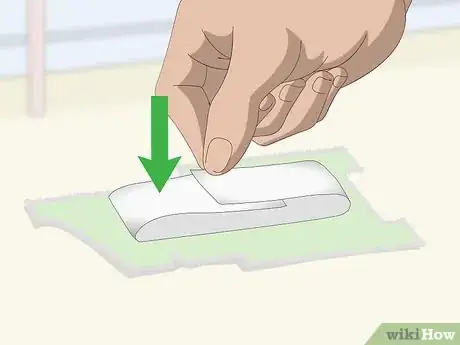
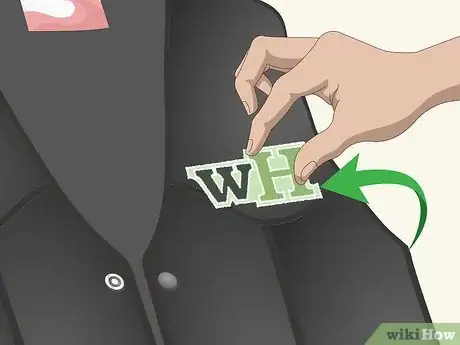
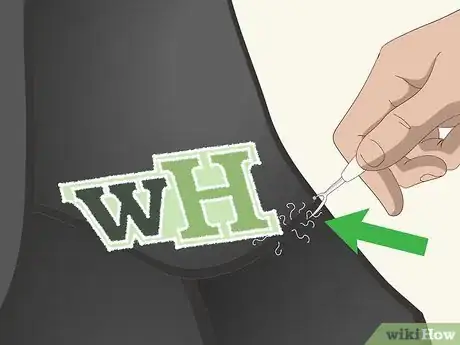
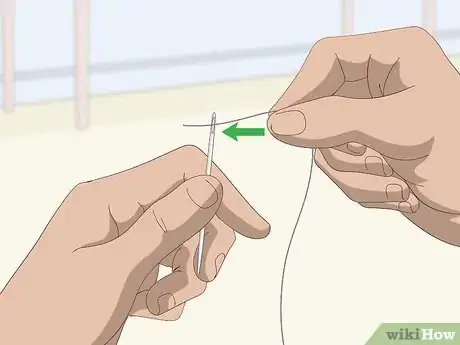
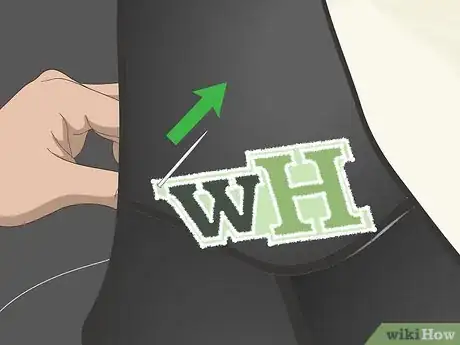
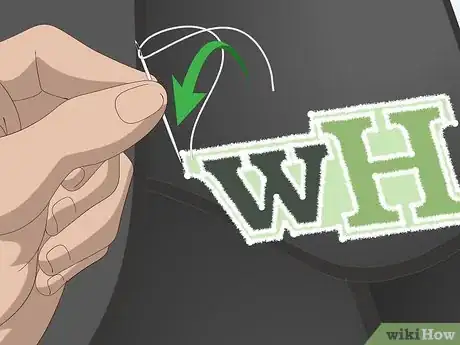
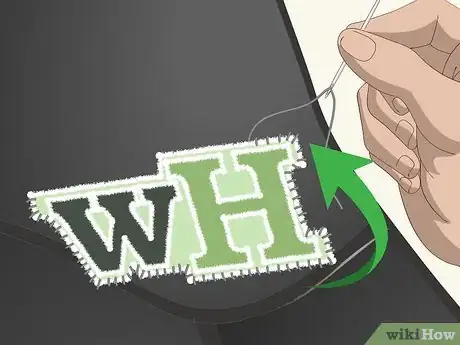
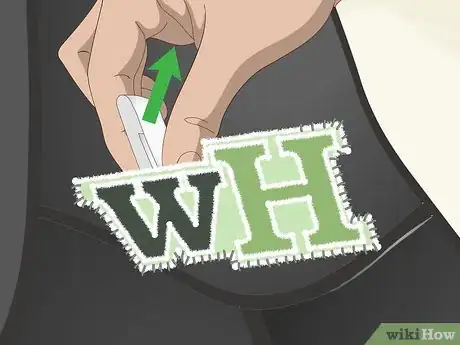
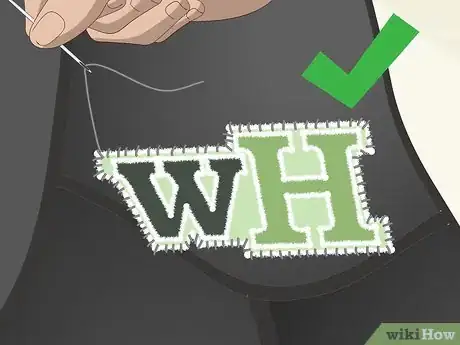
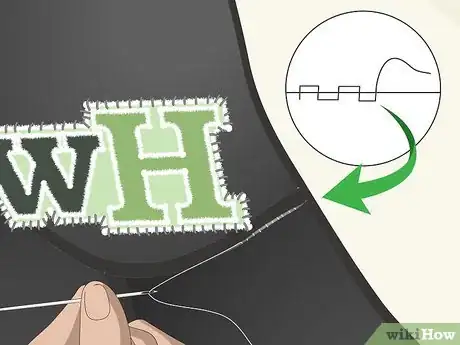
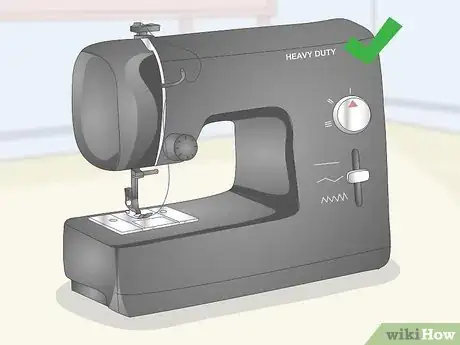
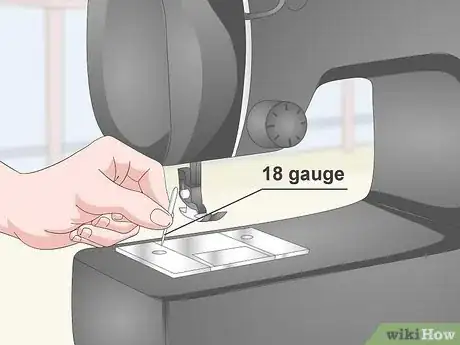
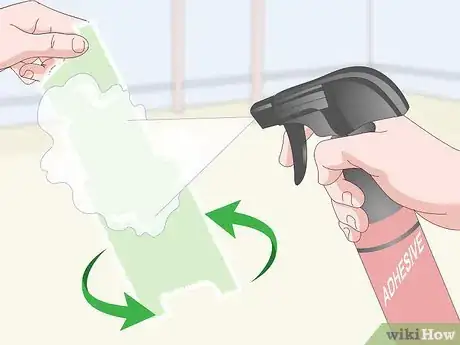
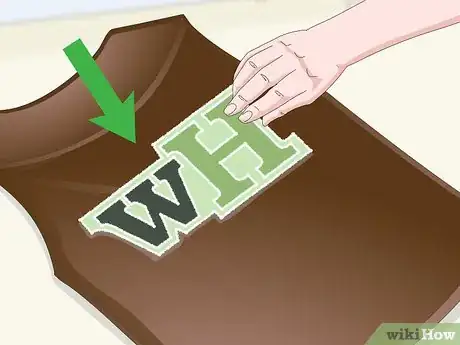
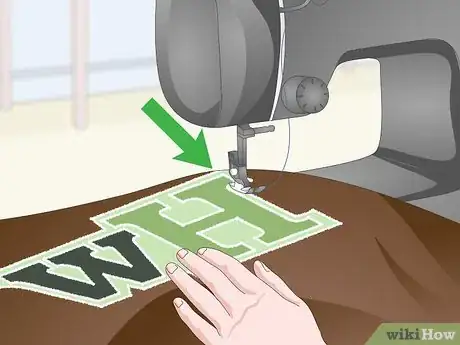
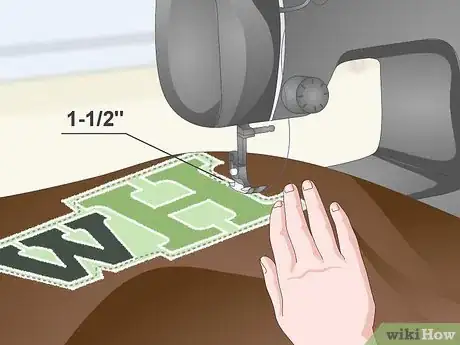
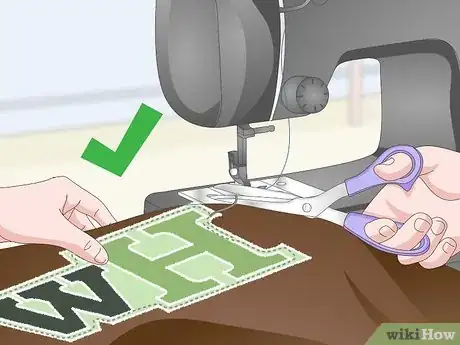

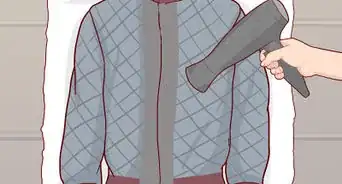



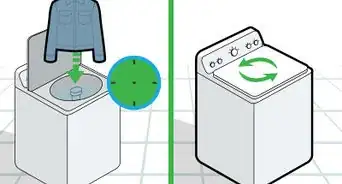

-Step-13.webp)

















































